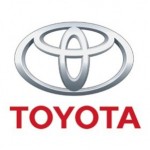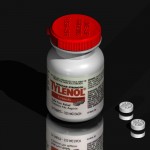Toyota’s Headache and Tylenol

 Toyota’s woes continue. This week they’ve announced production idles at two US plants, their recalls have grown to 8.5 million vehicles globally, allegations of cover-ups are blazing across the news wires, and dealers across the nation are experiencing further drops in demand. Toyota’s chairman has apologized to their customers and the US government has posted a statistic of 34 alleged deaths attributed to the acceleration defects in their cars. The picture has the uncomfortable sensation that some of the Toyota leadership responsiveness to the issue has been provoked by data becoming visible to many where it was being hidden beforehand. It is disturbing, and if true, it challenges the credibility much of what we and the world has celebrated as “The Toyota Way.” Their projected business forecasts are frightening and no one forecasts a speedy recovery. With regulators and hearings dragging the giant into more limelight, apologies may sound hollow to many.
Toyota’s woes continue. This week they’ve announced production idles at two US plants, their recalls have grown to 8.5 million vehicles globally, allegations of cover-ups are blazing across the news wires, and dealers across the nation are experiencing further drops in demand. Toyota’s chairman has apologized to their customers and the US government has posted a statistic of 34 alleged deaths attributed to the acceleration defects in their cars. The picture has the uncomfortable sensation that some of the Toyota leadership responsiveness to the issue has been provoked by data becoming visible to many where it was being hidden beforehand. It is disturbing, and if true, it challenges the credibility much of what we and the world has celebrated as “The Toyota Way.” Their projected business forecasts are frightening and no one forecasts a speedy recovery. With regulators and hearings dragging the giant into more limelight, apologies may sound hollow to many.
Contrast the current Toyota calamities to the response we observed from Johnson & Johnson in September 29, 1982. Seven people died in the Chicago area from Tylenol capsules containing cyanide. The cause was clearly caused by sabotage and malice and the incident could have killed their flagship brand. The response was immediate, uncompromising, and massive. The products, 31 million were pulled off the shelves, all shelves, at all locations. No wait and see, no “we’re working on it”, no “special task force” or recommitment to quality. Customer comes first, integrity must be common cause not special cause, and leadership leads from the front as chairman James Burke did. Today they are a pharmaceutical giant. Today recalls are so commonplace that they often fall under the radar.
Johnson & Johnson did not have an established recall process as none existed anywhere. Johnson & Johnson demonstrated agility. Tamper proof bottles did not exist, but Johnson & Johnson innovated. This took place in 1982, before the rest of the world learned to manage quality and flow, some of it from Toyota.
So, is this a surprise? Is the hubris unexpected? Do we see similar patterns as great performance brings a great image and the great image brings wealth or power? Does the importance of the image ever become more important than the foundations that earned it?
As the allegations and discoveries mount, regulators join the party, hearings ramp up, and the press has a global media event, what behavior should we expect? Currently, regulators at the FDA are critical or Tylenol’s poor responsiveness to a 2010 recall requirement. Hmmmm ……
Enterprises lose capability from disruption or decay ….. leadership can lead into or out of either.
Last year I wrote about how we earn more regulation and the impacts leaders have on this process. I suggest that it may be relevant again.
He is heavy, … , he ain’t my brother …
Also: A Tale of Two Tigers

